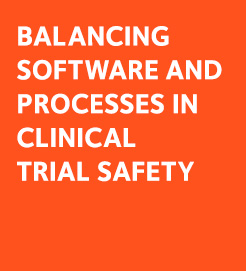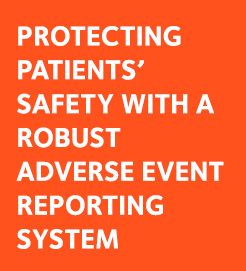SAE data reconciliation is a complex process that needs to be carried out all along the conduct of a clinical trial. Many data points are found to be identical between the clinical and the safety databases and some need to be clarified and corrected. In many cases a query needs to be sent to the site and the monitor is instructed to seek the correct information and ensure it is conveyed via the adverse event reporting system. This constitutes an additional complexity to the monitoring operations as even obvious corrections must be thoroughly documented.
Even though it is a mandatory procedure for any clinical trial, SAE data reconciliation has a particular importance in large clinical trials that last long and generate many SAEs. These trials are frequently international and may involve monitors reporting to the local affiliates, CROs or a mix of these. In most cases there are two distinct adverse event reporting systems, one being part of the clinical data collection system (eCRF or paper CRF) and the other attached to the safety monitoring adverse event reporting system. Whatever the process and tools used to reconcile SAEs, the comparison and definition of data to be verified and corrected is often initiated by the central clinical team (often based in the headquarters). In many cases, a query is issued and the local monitor is asked to follow up with the investigational site.
Here is where the difficulties start. While the initial data entry into the CRF will generate a series of queries, due to either automatic edit checks or manual review of the data, the SAE reconciliation process will issue a second wave of queries for data that may appear to have already been checked and corrected. Sometimes, the patient case report book may be considered finalized at the CRF level and may have been signed off by the investigator. All data seem correct and consistent. Now, a new query is sent because of a discrepancy with some data recorded in the safety adverse event reporting system. Often the query simply asks to confirm obvious information and if there are several, this can be frustrating to the site personnel.
Local monitors must therefore be trained to better understand the process and the rationale for these additional queries. They need to be able to explain the reasons and guide the site personnel in reviewing the source data and updating information in the adverse event reporting system. It is recommended to organize a presentation of the SAE reconciliation process and the expected volume and nature of data that are likely to be queried to all monitors at the beginning of the trial. It is also recommended to include the topic in the study initiation visit (SIV) and investigator’s meeting (IM) presentations so that site personnel, including the principal investigator, are aware of the process and anticipate any associated workload.
In conclusion, the SAE reconciliation process generates additional workload for field-based monitors and site personnel. The required actions may seem redundant and therefore the rationale needs to be explained. Given the current state of electronic reporting systems, the dual process of SAE recording in two different adverse event reporting systems is likely to continue for the foreseeable future and so is the need for SAE data reconciliation. Integrating the process description and training to the main trial conduct is the best way to keep all stakeholders aware and avoid questions and frustration.
DOWNLOAD NOW THE FREE SAE RECONCILIATION HANDBOOK
The Manual / Reference Book with all the topics related to the Safety Data Reconciliation Management.







